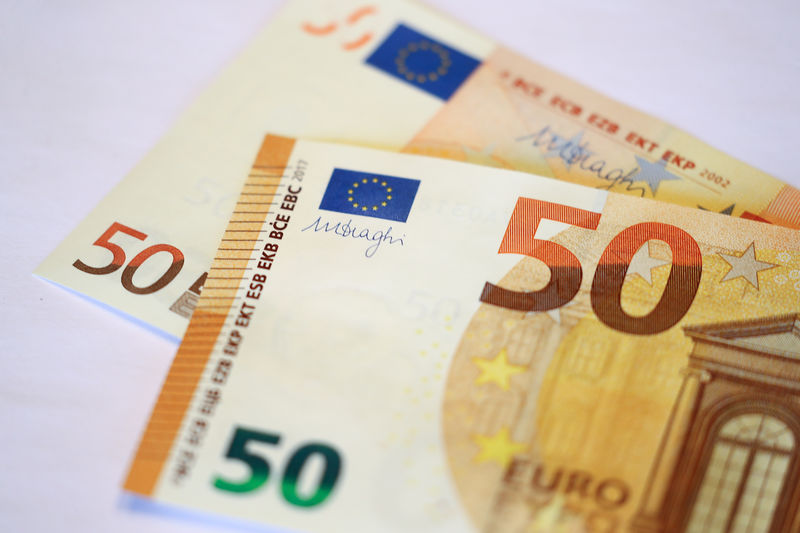By Tommy Wilkes and Richard Pace
LONDON (Reuters) - After the euro's slide to 22-month lows against the dollar, investors are scrambling to shield themselves from more weakness as Europe's poor data contrasts with an upbeat U.S. economy that is sending the dollar surging.
Options markets suggest investors this week bought sizeable downside protection against further euro weakness against the dollar, after the single currency broke below its 2019 low of $1.1170, a level that has opened the door to more selling.
On Thursday, the pair traded as low as $1.1117, the lowest since May 2017. The dollar, meanwhile, soared against a basket of currencies as robust data on jobs and durable goods orders took its year-to-date gains to 2.2 percent.
"We have been increasingly doubtful that the euro can hold," said Neil Mellor, currencies analyst at BNY Mellon. "Growth forecasts have been slumping and the ECB (European Central Bank) might have to revise its expectations again."
This week's fall -- more than 1 percent so far -- follows a period of calm during which euro/dollar, the world's most traded currency pair, has been stuck in its narrowest ever trading range. The tiny price fluctuations have frustrated investors keen on volatility and clear direction.
(GRAPHIC: Euro hits 22-month low - https://tmsnrt.rs/2W4eDnX)
The Federal Reserve's dovish shift at the start of 2019 would normally have hurt the dollar. But the Fed move was followed in March by the ECB's decision to push back further planned interest rate rises.
Since then, euro zone business surveys have pointed to further gloom, with a widely-watched German business climate index showing deteriorating morale in April.
The U.S. economy, on the other hand, appears to be blooming; latest data showed new orders for U.S.-made capital goods increased by the most in eight months, while U.S. first-quarter growth could be as much as 2.4 percent, according to some estimates.
Until now, investors have had to pay relatively little to protect their portfolios against a euro downside, because currency volatility has been so low and few were buying options.
But that has changed - forex dealers said that a swathe of options were bought on Thursday giving holders the right to sell euros for $1.1000, including one for 500 million euros.
The market is already heavily long dollars, with speculative investors holding their biggest short position in euros since December 2016, CFTC data indicates.
(GRAPHIC: Euro positions - https://tmsnrt.rs/2W4JD73)
One-month implied volatility - a gauge of expected price moves - has also jumped, after threatening to hit record lows only last week.
(GRAPHIC: Euro/dollar implied volatility - https://tmsnrt.rs/2XOzlZx)
Euro/dollar volatility is likely to be boosted by the run-up to the May 23 European parliamentary elections, where populist parties could make a strong showing by tapping into anger about public expenditure cuts and income inequality.
Of course, not everyone believes the euro will spiral lower. Societe Generale (PA:SOGN) analyst Kit Juckes, for instance, said the dollar - supported by an interest rate advantage of at least 70 basis points above its main economic competitors - was expensive, while the euro looked cheap.
"The risk, then, is that, having broken through the bottom of the recent euro-dollar range, all we do is add another coat of paint to the bottom of it, and settle into a marginally lower range," he said.
(GRAPHIC: YTD G10 FX performance - https://tmsnrt.rs/2W4dZGQ)
But $1.10 is not unknown territory for the euro, which spent much of 2016 and 2017 below that level.

"It's not really hard to rationalize," said BNY Mellon's Mellor. "The bad news is going to continue to mount from an (European) economic perspective."